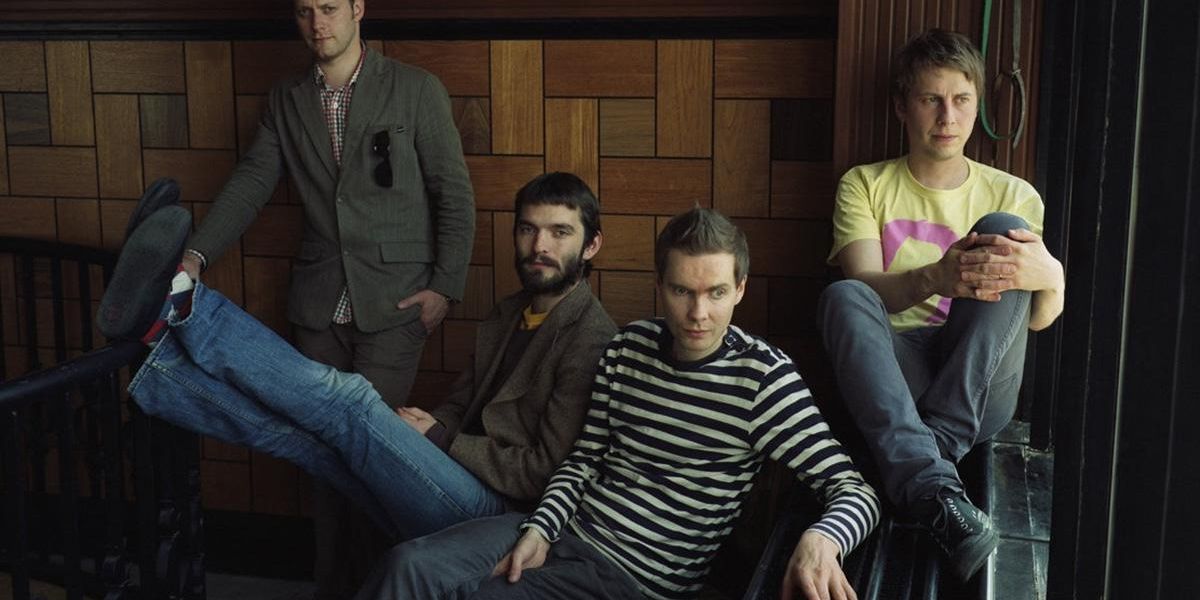Sigur Rós' Odin's Raven Magic came into existence in starts and stops like a bird that couldn't get off the ground. The record, a live orchestral composition originally imagined by Sigur Rós, first saw the light of day nearly two decades ago while the band's third studio album ( ) brought the band worldwide recognition.
The album is a live collaboration between the band, composer Hilmar Örn, violinist Maria Huld Markan Sigfúsdóttir (of the Icelandic band Amiina), and fisherman/musician Steindór Andersen. The group initially premiered the piece at London's Barbican Centre in April of 2002. Although no proper recording was made of the show, parts of the performance floated around online for a couple of years before it was recorded live at La Grande Halle de la Villette in Paris in 2004 with Schola Cantorum of Reykjavík and L'Orchestre des Lauréats du Conservatoire National de Paris.
The recording was kept under wraps until December of this past year. The reason for its long-overdue release is a bit nebulous. However, former Sigur Rós member Kjartan Sveinsson—who played a large part in arranging the album—told Apple Music: "It's been lying around for such a long time, and people have been asking if it's going to come out, waiting for it. We decided, let's just do a simple release, get it out."
Odin's Raven Magic is unlike other Sigur Rós productions. A classical orchestra replaces the band's signature ethereal rock sound. Lead vocalist Jónsi's trademark falsetto is not at the forefront of the record and can only be heard on a couple of tracks. Instead, Steindór Andersen, with whom the band had previously collaborated on their 2001 EP Rimur, performs the duty of lead vocalist.
Steindór is a chanter and singer of traditional epic Icelandic poetry called rímur, so his lead role in Odin's Raven Magic fits. Sveinsson explained that Icelandic music has a "special chanting style, which is sometimes rhythmically and sonically different from other folk music" and that Andersen "is a specialist in that field and he managed to write his own chants, new chants. Kind of new folk songs, if you will."
Odin's Raven Magic was inspired by Hrafnagaldr Óðins—a lost chapter of an epic Icelandic poem believed to have been penned sometime between the 13th and 15th centuries. The chapter recounts a banquet attended by Odin (Norse god of wisdom, death, poetry, and divination) and his fellow gods. During the banquet, Odin sends his messenger ravens—Huginn and Muninn— to assess what's happening in the world and look for any signs of trouble. When they return, the ravens come bearing grim news that could signal the end of the world.
To reflect the poem's dark material, Odin's Raven Magic is often ominous, scattered with moments of urgency and despair. The symphonic elements pay homage to the poem's traditional roots, keeping the piece grounded in a classical canon. However, the sweeping intensity a Sigur Rós fan would come to expect can be found throughout.
The album begins discreetly with the slowly swelling strings of "Prologus", which act as a warm-up. On "Alföður orkar", the listener is introduced to Andersen, whose voice calls to mind Brendan Perry of Dead Can Dance. As he brings in lines of the poem, the haunting choral arrangements of Schola Cantorum of Reykjavík emerge, sounding as if they are coming from the lofty ceiling of a cathedral.
A stone marimba, hand-built for the performance by artist Páll Guðmundsson, makes its debut in "Dvergmál". The marimba plays a starring role throughout the record and was significant to its creation. According to Sveinsson, the stones of the marimba all sounded different. They informed the album like a sonic Ouija board: "when you're writing music on the stone marimba, you tend to go to a stone that pleases you, unconsciously in a way. Each stone is individual and kind of special."
Jónsi's vocals appear for the first time in "Stendur æva" following the chanting of Andersen. Coupled with a repeated phrase on the stone marimba, the combination of their voices is hypnotic. Everything eventually coalesces with the orchestra's swelling strings and the rising sound of the choir, making the song the standout piece of the record. It's no surprise that the band released the track as a single from the album.
While most of the instruments are stringed, a combination of horns is threaded throughout the record. They are subtle but come to the foreground in "Áss hinn hvíti", which translates into "the white god". This is a reference to Heimdallr—a god who possesses a resounding horn in Norse mythology and the deity who blows a horn at the end of the poem, signaling the break of day and the coming apocalypse. The troublesome feeling is felt on the track in the mournful horns and the melancholic strains of the choir.
